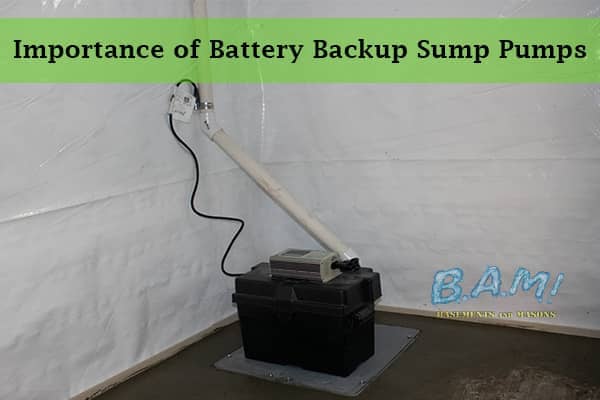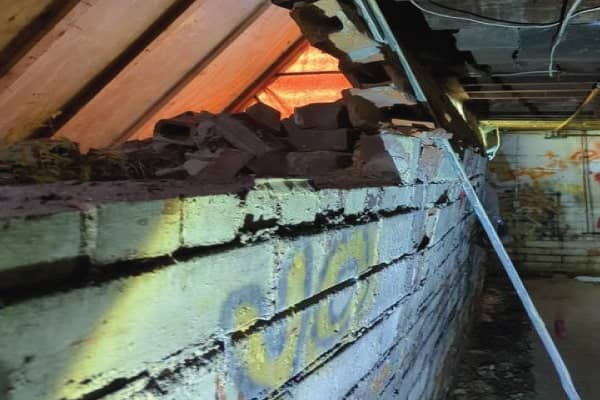The Main Principles Of Best Basement Waterproofing
The Main Principles Of Best Basement Waterproofing
Blog Article
Indicators on Best Basement Waterproofing You Should Know
Table of ContentsFascination About Best Basement WaterproofingBest Basement Waterproofing Fundamentals ExplainedA Biased View of Best Basement WaterproofingSee This Report about Best Basement Waterproofing
What causes water damages concerns in your basement? Below are a couple of points to seek: when the foundation of your home is compromised, water is great at slipping in between little cracks and crevices and creating damage. Pipelines that line the within of your walls are simply one instance of where water damages can take place.The soil and ground of your home is really important. If there is also much water surrounding your home, nevertheless, it can press the soil right into your home and create the seals of your basement to end up being endangered. when you see excess water in position where it should not be, that is an excellent sign that you have a trouble.
Concrete waterproofing coatings are cement-like; when completely dry, they adhere completely to concrete and stonework walls. You apply the layer with a heavy brush made with bristles swirled during application for an appealing, completed look. Nonetheless, concrete water-proof finishings can not be put on formerly repainted surface areas Silicate-based concrete sealers, likewise called densifiers, are also ideal only for walls that haven't been repainted or sealed.
Indicators on Best Basement Waterproofing You Should Know
Due to the fact that these are passing through sealants, they can not flake off or peel off, and you can have paint used over them. The American Eagle team may discover extra complex reasons for your wetness problems; there are added solutions readily available. Plastic sheets and panels may be incorporated with indoor cellar drainage systems. They don't quit water from surviving the wall, yet they do quit it from wrecking things in the basement.
A sump pump is required to relocate water out of your basement. In order to appropriately recommend a solution for your wet cellar, call American Eagle for a no-obligation see. Our specialists will have the ability to discuss which options are choices for your home. Why should you waterproof your cellar? Here are a couple of things the professionals can install to aid the waterproofing process: this is designed for the walls of your basement.

Cellar waterproofing is a wonderful means to obtain in advance of possible water damages that might come your method.
Our Best Basement Waterproofing Ideas
When it pertains to safeguarding your home, among one of the most important steps you can take is cellar waterproofing. A completely dry basement not just ensures a risk-free and healthy and balanced environment for you and your household, yet it also helps to stop costly water damage and mold growth. In this blog site message, we will go over the significance of basement waterproofing, the benefits it provides, and exactly how you can set about safeguarding your area.

When it pertains to basement waterproofing, there are numerous methods that can be utilized to keep water out of your area. These include indoor sealants, exterior waterproofing membranes, and water drainage systems. The finest technique for your basement will certainly depend upon variables such as the view publisher site degree of water intrusion, the problem of your foundation, and your budget plan.
In final thought, basement waterproofing is a vital action in safeguarding your home from water damages, mold and mildew growth, and various other concerns. By spending in cellar waterproofing, you can guarantee that your area remains completely dry, secure, and healthy and balanced for you and your family members. Not only does basement waterproofing provide assurance and defense for your home, but it can likewise increase its worth and conserve you money on energy expenses in the future.
Indicators on Best Basement Waterproofing You Need To Know
Inside sealants are a kind of basement waterproofing method that entails applying a sealant to the within the basement walls and floors. Water can seep right into a basement via fractures, gaps, or permeable concrete, particularly in areas where there is high groundwater or inadequate drainage. This can result in water damages and mold development, along with damages to the structure and structural integrity of the building.
It is a reliable option for avoiding water damage and preserving the architectural stability of the structure. However, it can be costly and disruptive to install, as it requires excavation around the foundation and may involve landscaping and various other repair work once the waterproofing is total. However, this method is the most trustworthy and resilient solution for preventing water seepage in the basement.
Structure crack injections are a technique of fixing splits in the structure wall surfaces from the inside, without digging deep into the dirt around the web structure. The process includes injecting a fluid polyurethane or epoxy into the cracks, which after that sets and develops a waterproof obstacle that protects against water from seeping through. This approach is typically used for smaller cracks that do not posture an architectural risk, and can be finished quickly and with marginal interruption to the structure's owners.
Report this page